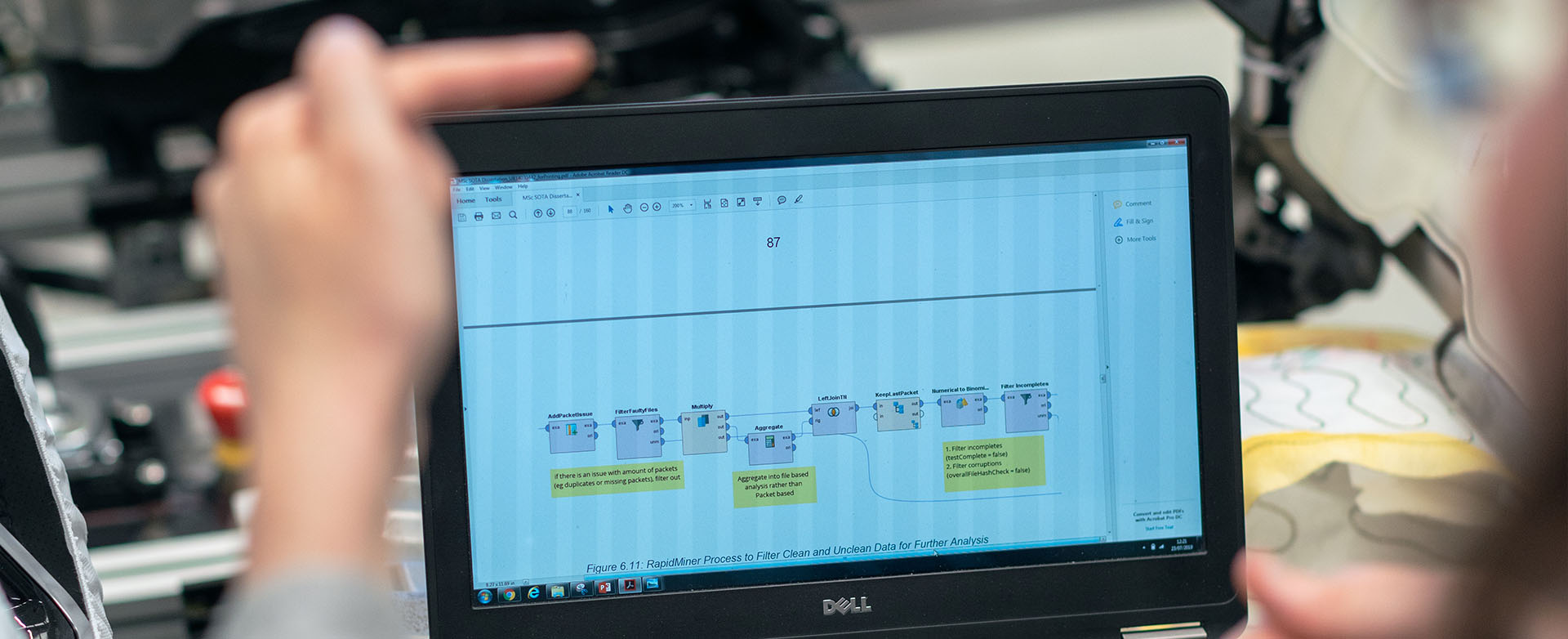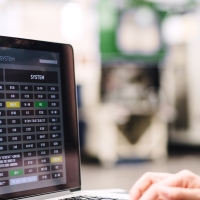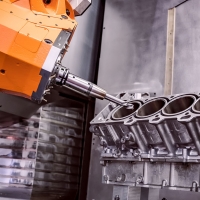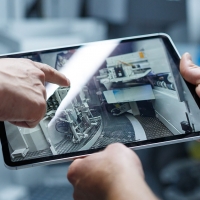Industrial Software: Advantages and Disadvantages of the Most Popular Tools
In today's dynamic industrial environment, automation is crucial for effectively managing production processes. Properly chosen tools and professional configuration can enhance efficiency and provide precise control over the entire production process. In this article, we will examine the most important tools and software used in industrial automation, analyzing their advantages and disadvantages.
Each of the tools presented has its unique features, offering benefits and posing certain challenges to users. Licensing costs, support for various devices or machines, and integration with existing systems are just a few of the factors that can influence decisions regarding the choice of specific automation tools.
Wonderware (by Aveva):
Description: Wonderware is a popular industrial automation software platform that provides solutions for SCADA (Supervisory Control and Data Acquisition) and HMI (Human-Machine Interface) applications. It offers real-time data visualization, data logging, alarms, and remote control capabilities.
Pros: User-friendly interface, extensive functionalities, scalability, and integration with various automation devices and protocols.
Cons: Initial setup and licensing costs, potential security vulnerabilities if not configured properly.
Studio 5000 (by Rockwell Automation):
Description: Studio 5000 is an Integrated Development Environment (IDE) used for programming Rockwell Automation's Logix-based PLCs (Programmable Logic Controllers). It offers a unified platform for designing, configuring, and maintaining control systems.
Pros: Comprehensive toolset, efficient programming, support for various communication protocols, and seamless integration with Rockwell Automation products.
Cons: Limited to Rockwell Automation products, potential complexity for beginners.
Siemens TIA Portal (Totally Integrated Automation Portal):
Description: TIA Portal is an engineering software package developed by Siemens, used for programming and configuring Siemens' PLCs, HMIs, and other industrial automation devices.
Pros: Comprehensive platform, time-saving features, easy hardware integration, and simulation capabilities.
Cons: License costs, and extensive training required for efficient use.
Ignition (by Inductive Automation):
Description: Ignition is a web-based industrial automation software platform designed for SCADA, MES, and IIoT applications. It offers an open architecture and is highly customizable.
Pros: Web-based access, platform independence, robust data visualization, and unlimited tags and client licensing model.
Cons: Learning curve for new users, cost associated with server deployment.
FactoryTalk (by Rockwell Automation):
Description: FactoryTalk is a suite of industrial automation software tools offered by Rockwell Automation. It includes FactoryTalk View (HMI), FactoryTalk Historian, FactoryTalk ProductionCentre (MES), and more.
Pros: Seamless integration with Rockwell Automation products, flexible system architecture, and data collection and analysis capabilities.
Cons: Licensing costs, limitations in working with non-Rockwell products.
ABM Industry - a reliable team of experienced industrial engineers
Control systems integration services, PLC progrmaming, HMI, SCADA & more
Intouch (by AVEVA):
Description: Intouch is an industrial automation HMI (Human-Machine Interface) software offered by AVEVA. It provides real-time data visualization, alarm management, and process control capabilities.
Pros: Robust visualization, flexible configuration, scalable, and integration with various data sources.
Cons: Licensing costs, limited scripting capabilities compared to other platforms.
PILZ PNOZmulti Configurator (by PILZ):
Description: The PILZ PNOZmulti Configurator is software used for programming and configuring PILZ PNOZmulti modular safety controllers. It allows for flexible and efficient safety engineering in automation projects.
Pros: User-friendly interface, safety function libraries, and graphical programming capabilities.
Cons: Limited to PILZ PNOZmulti controllers.
PowerFlex Drives Configuration Software (by Rockwell Automation):
Description: The PowerFlex Drives Configuration Software is used for programming and configuring Rockwell Automation's PowerFlex family of drives, including VFDs (Variable Frequency Drives).
Pros: Easy drive configuration, flexible control options, and integration with Rockwell Automation systems.
Cons: Specific to Rockwell Automation PowerFlex drives.
Endress+Hauser FieldCare (by Endress+Hauser):
Description: Endress+Hauser FieldCare is a software tool used for the configuration, diagnostics, and calibration of Endress+Hauser instruments and devices used in process industries.
Pros: Comprehensive device configuration, calibration support, and asset management capabilities.
Cons: Limited to Endress+Hauser devices.
WinCC (by Siemens):
Description: WinCC is a SCADA (Supervisory Control and Data Acquisition) software developed by Siemens. It provides advanced visualization, data acquisition, and process control capabilities for various industries.
Pros: Extensive data visualization, scalable, and integration with Siemens PLCs and HMIs.
Cons: Licensing costs, and potential complexity for large-scale applications.
TOP Server (by Software Toolbox):
Description: TOP Server is an OPC (Open Platform Communications) and native HMI device connectivity software used for collecting data from various industrial devices and making it available to different applications.
Pros: Wide device connectivity, OPC UA support, easy configuration, and integration with various HMI/SCADA software.
Cons: Licensing costs are based on the number of devices and tags.
Siemens Step7 (TIA Portal):
Description: Siemens Step7 is a part of the TIA (Totally Integrated Automation) Portal, which provides the engineering and programming environment for Siemens' SIMATIC S7 PLCs.
Pros: Comprehensive programming and configuration capabilities, integration with Siemens devices, and a unified platform for multiple automation tasks.
Cons: Learning curve for new users, license costs for advanced features.
LabVIEW (by National Instruments):
Description: LabVIEW is a graphical programming language and development environment used in various industrial automation and measurement applications.
Pros: Graphical programming for data acquisition, control, and analysis, extensive library of instruments and devices, and modular design for rapid prototyping.
Cons: Learning curve for new users, licensing costs, and performance limitations for certain high-speed applications.
Codesys (by 3S-Smart Software Solutions):
Description: CODESYS is a development environment used for programming and configuring industrial automation devices like PLCs and HMIs.
Pros: Open and versatile platform, support for various PLC hardware, and extensive programming functionalities.
Cons: May require additional licensing for advanced features, and limited graphical capabilities compared to other software.
InduSoft Web Studio (by AVEVA):
Description: InduSoft Web Studio is an HMI/SCADA software that allows users to build user-friendly interfaces and monitor/control industrial processes.
Pros: Web-based access, cross-platform compatibility, and data analysis capabilities.
Cons: Licensing costs, potential complexity for large-scale applications.
Matrikon (by Honeywell):
Description: Matrikon is a suite of industrial connectivity and data management solutions used for OPC-based communication between various automation devices and systems.
Pros: Reliable OPC server and client functionalities, secure data communication, and integration with various SCADA and HMI software.
Cons: Licensing costs based on the number of tags and devices.
TwinCAT (by Beckhoff):
Description: TwinCAT is a PC-based automation software platform used for programming and configuring Beckhoff's industrial automation products, including PLCs and motion control systems.
Pros: Real-time control, scalability, and integration with PC-based systems.
Cons: Requires specialized PC hardware, learning curve for new users.
Our passion is achieving our clients' goals
At ABM Industry, we have been programming PLCs, creating visualizations and operator interfaces, and integrating control systems for years – helping to unlock the potential of industrial automation. We are trusted by both local manufacturers and international corporations.
Send us your contact details and describe the scope of the collaboration you're interested in, your current challenge, or a new project. Just a few words will suffice – leave the rest to us.











